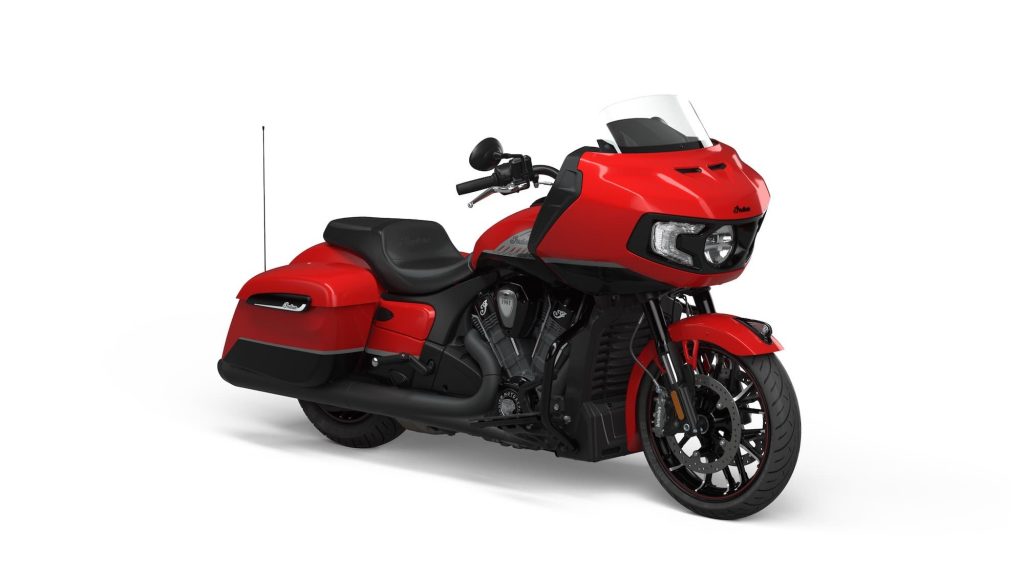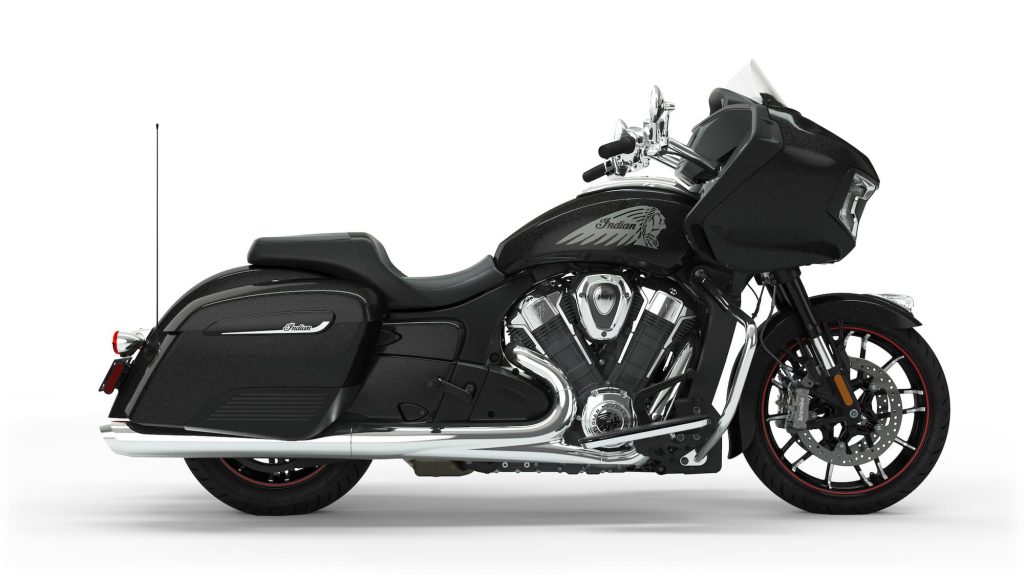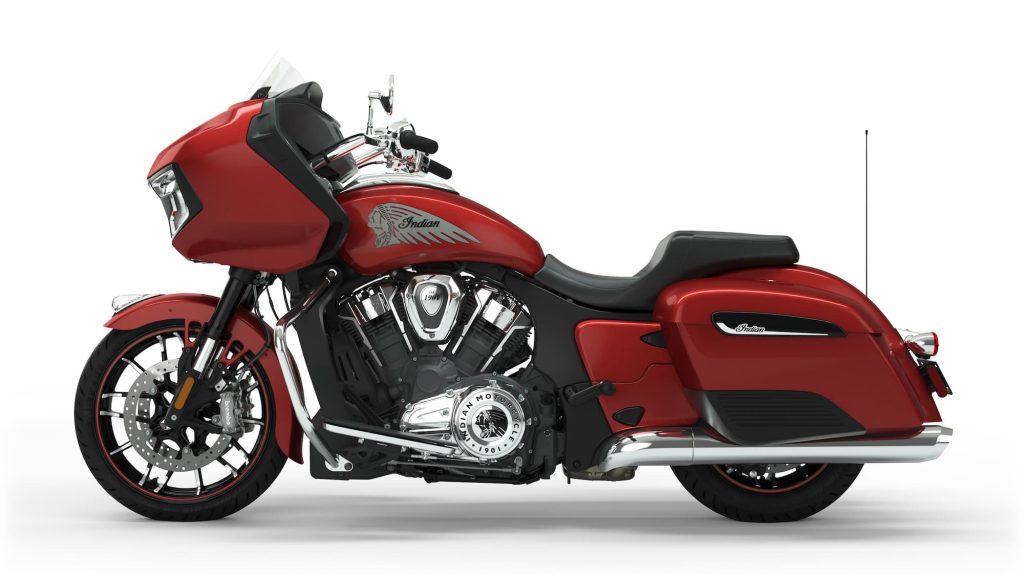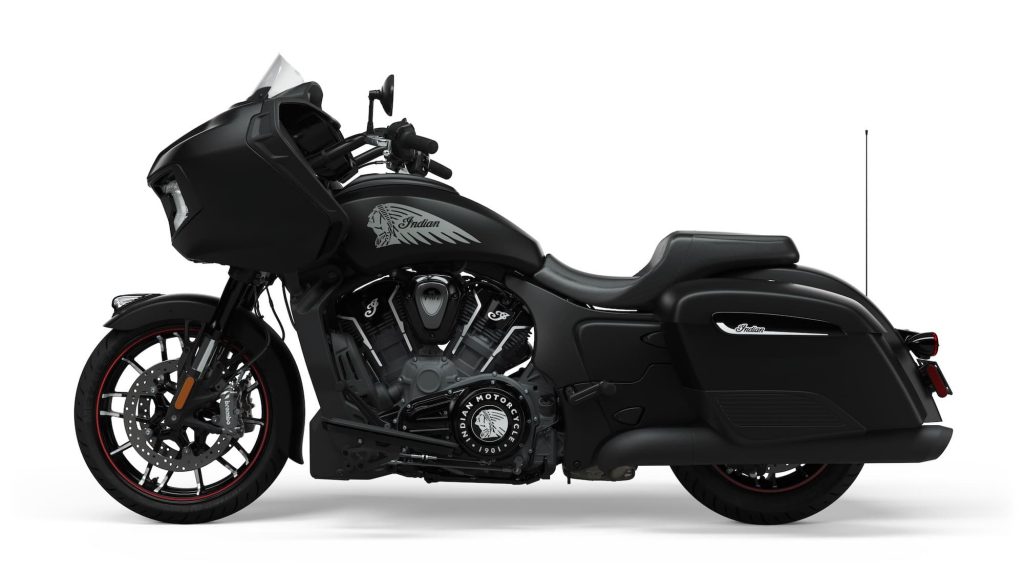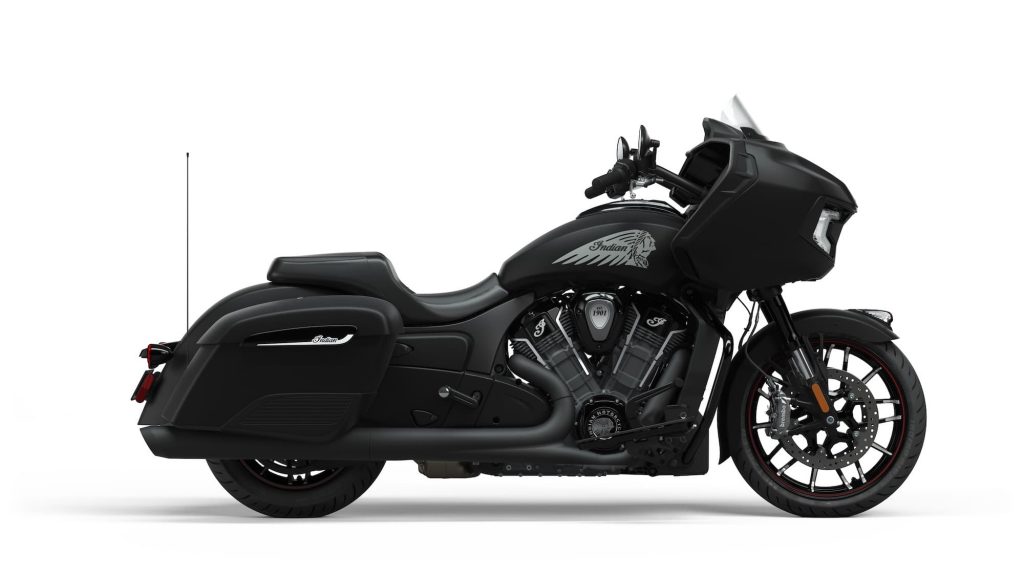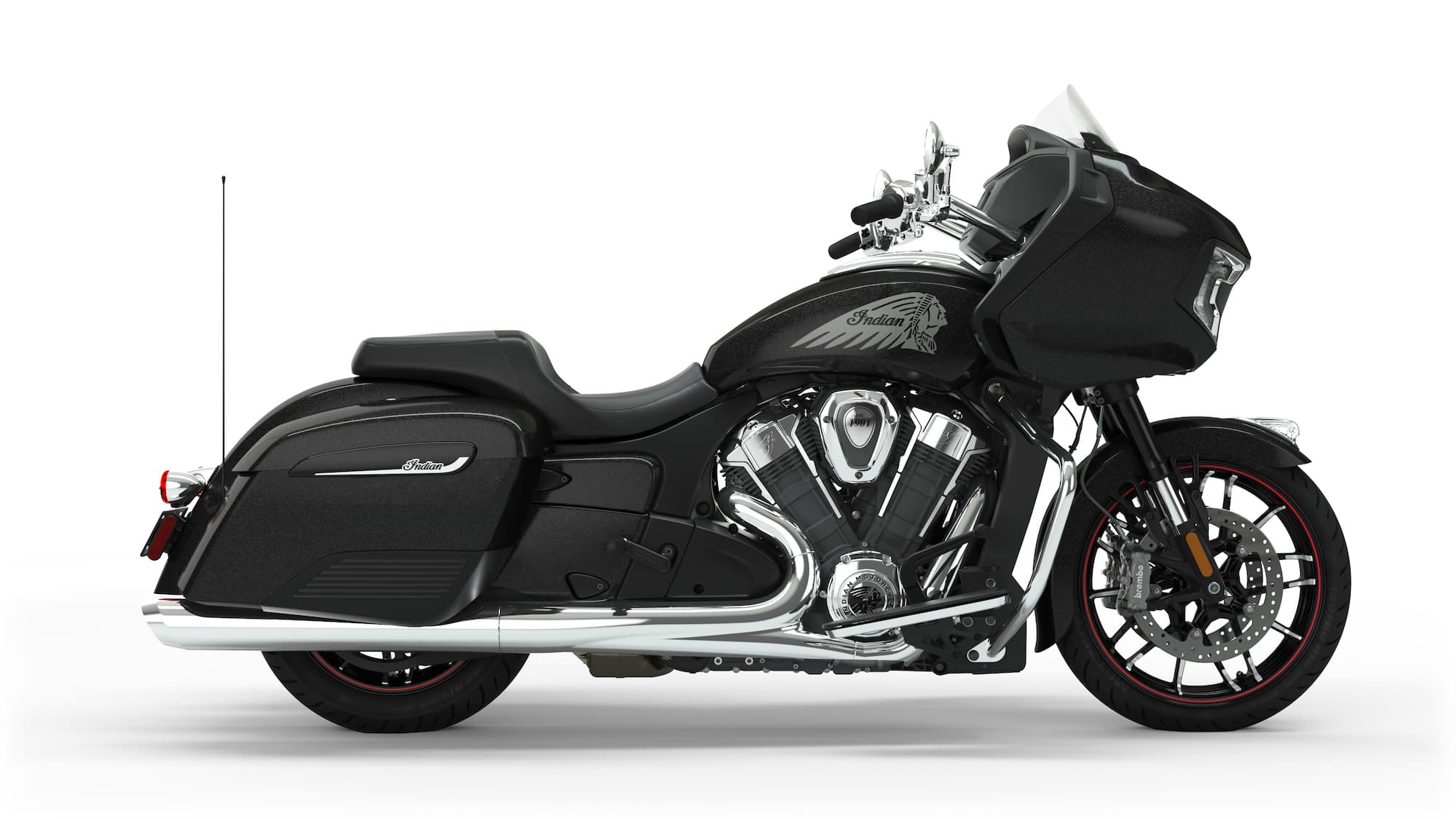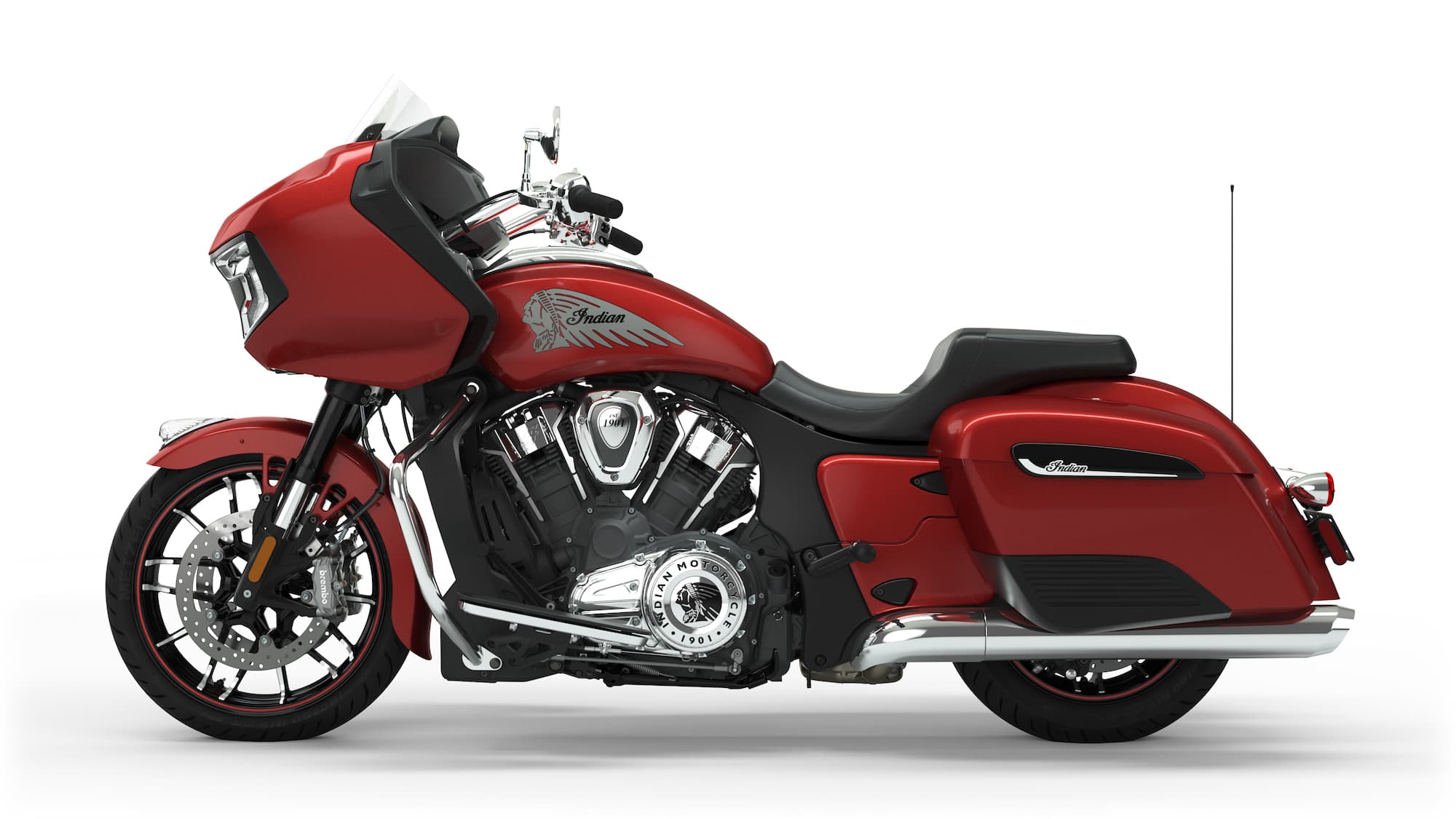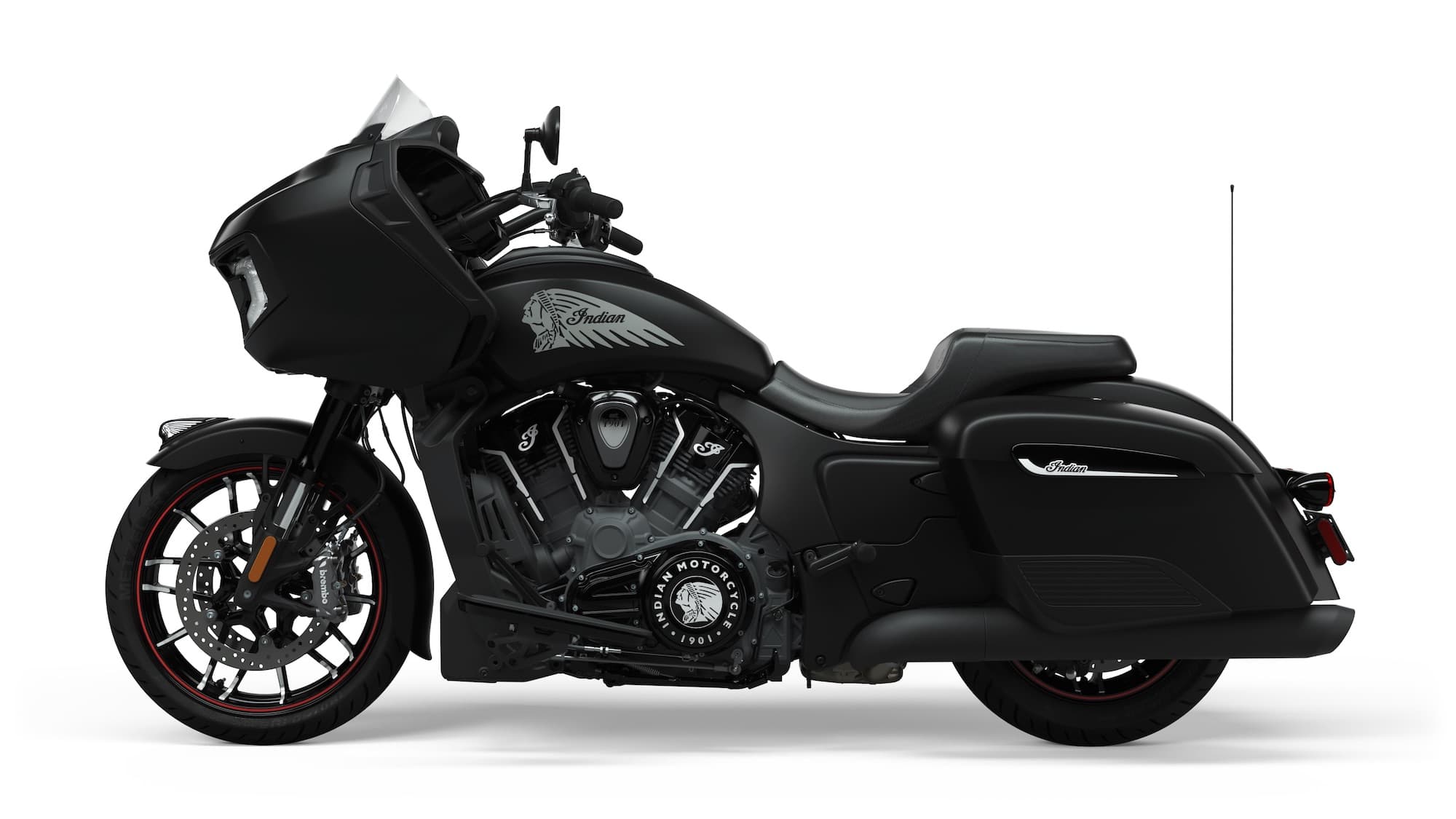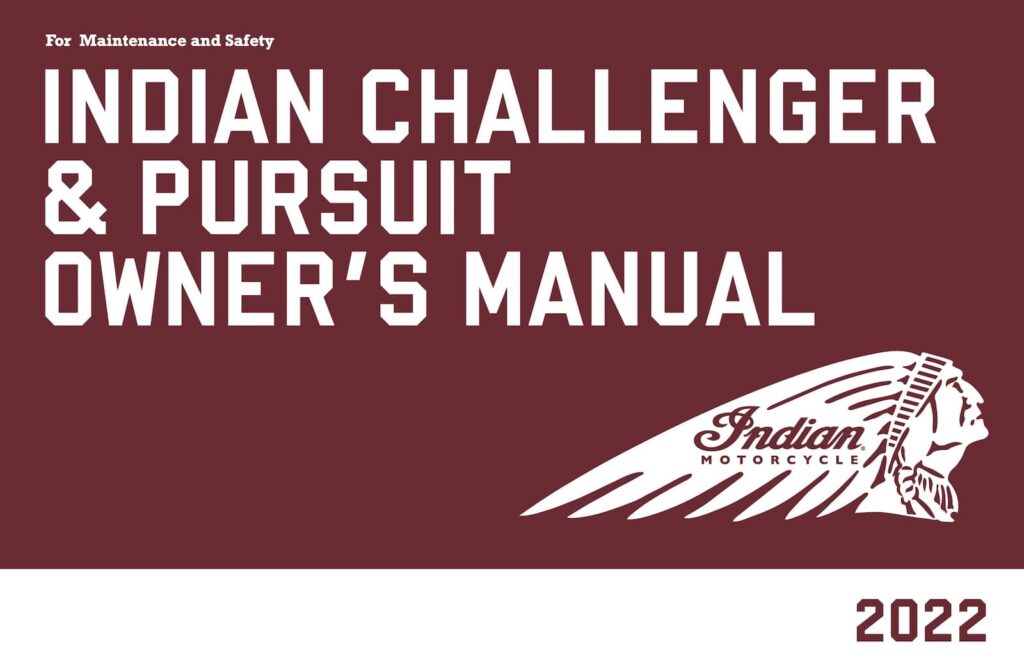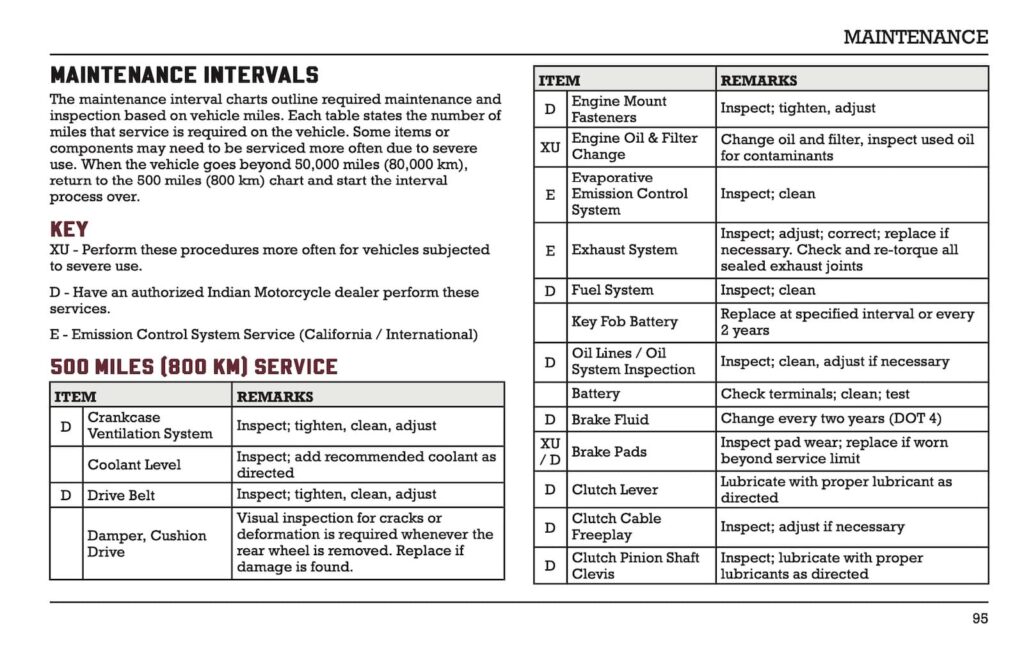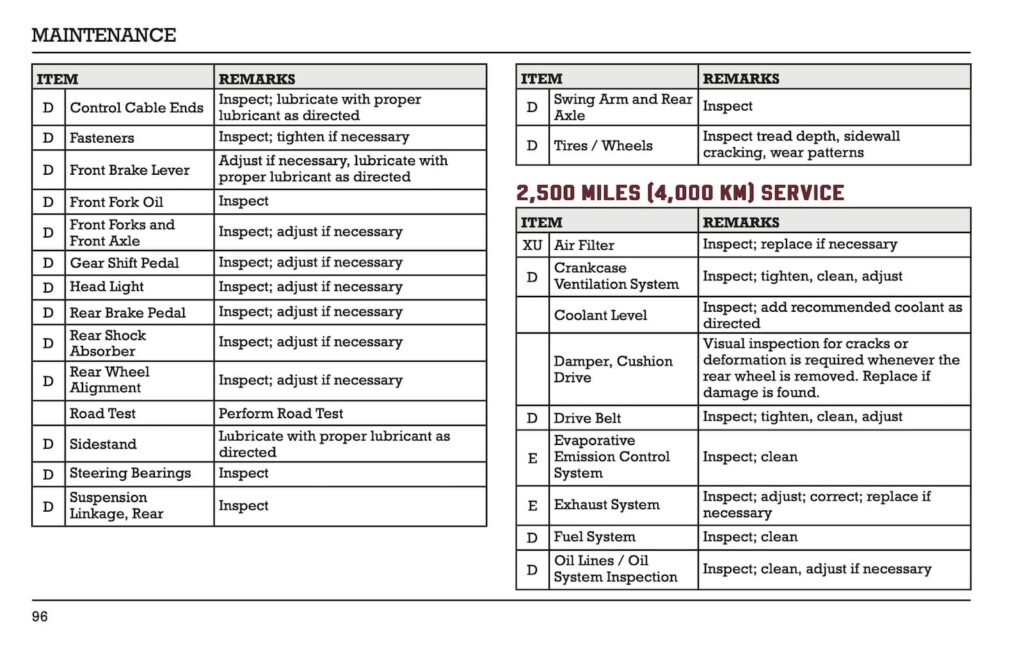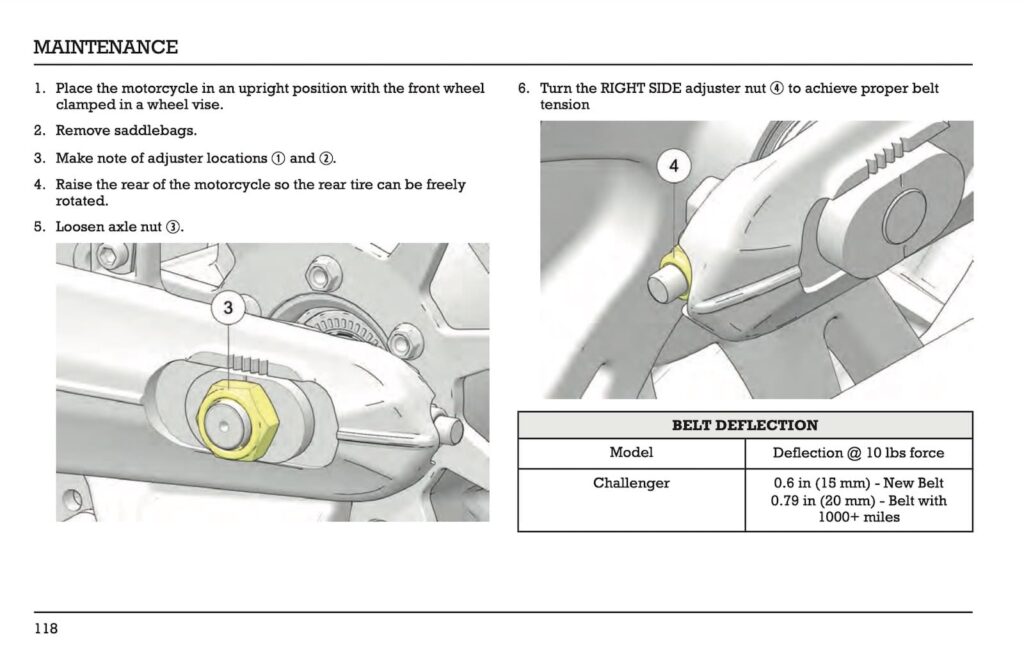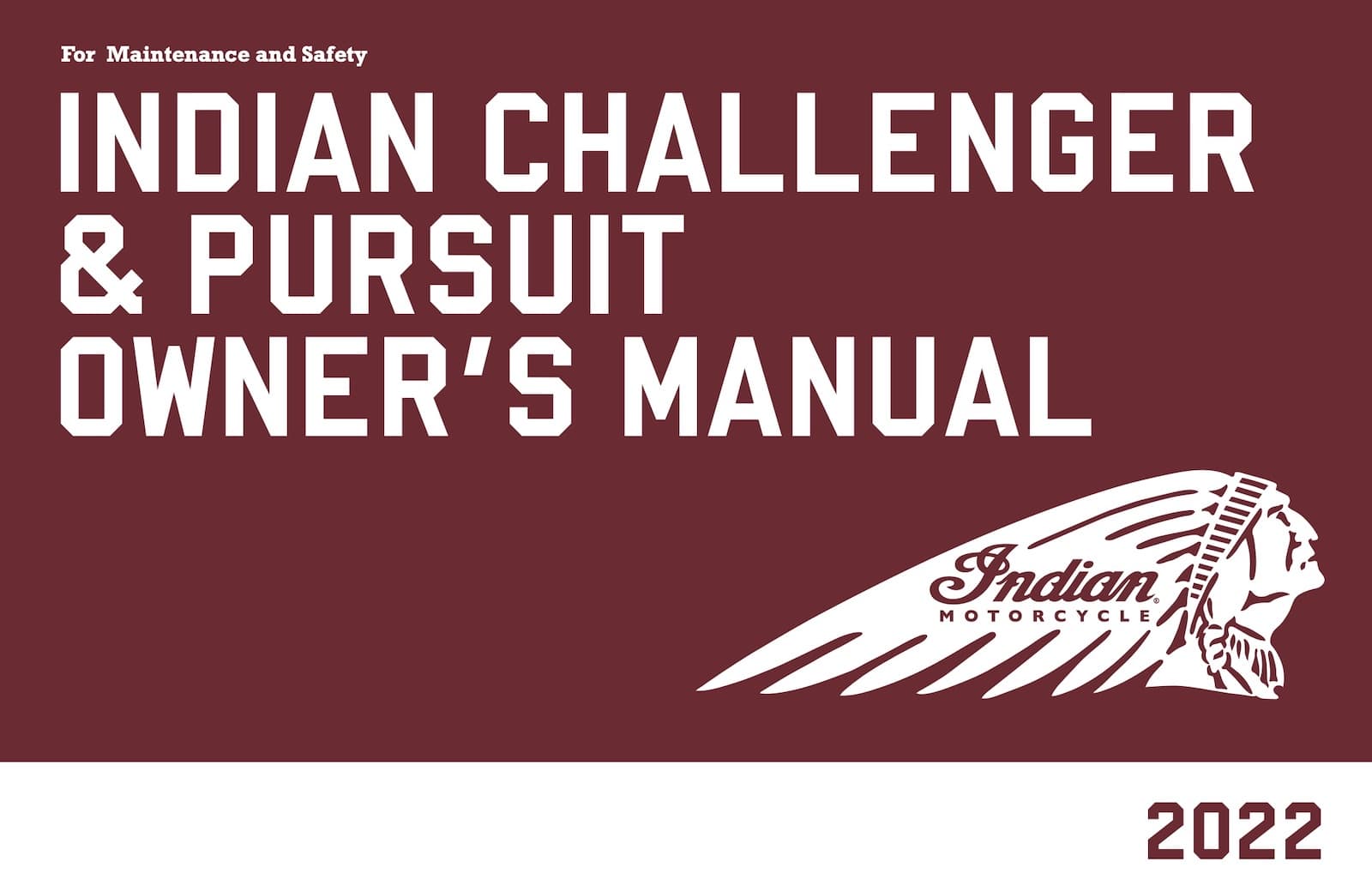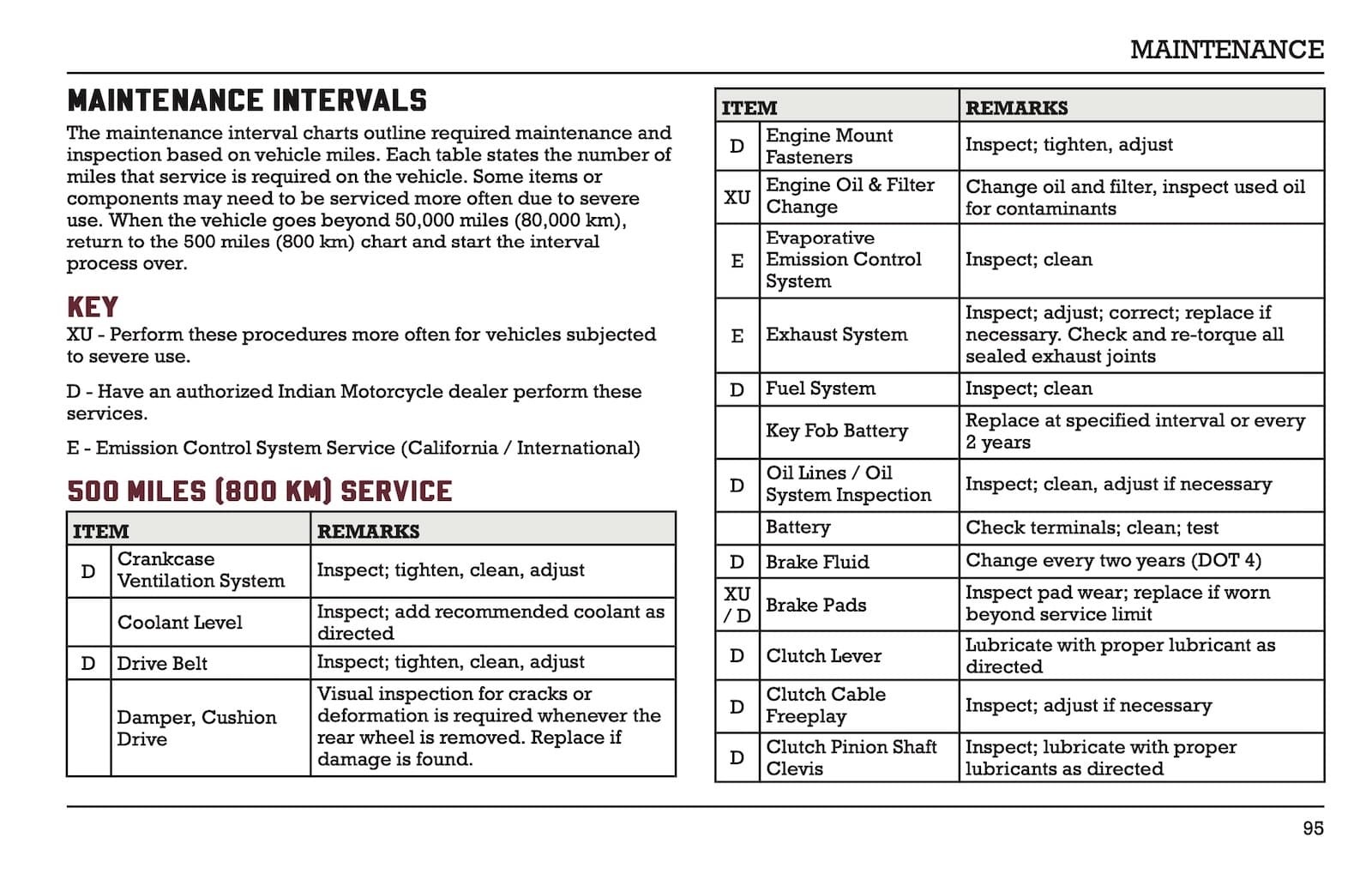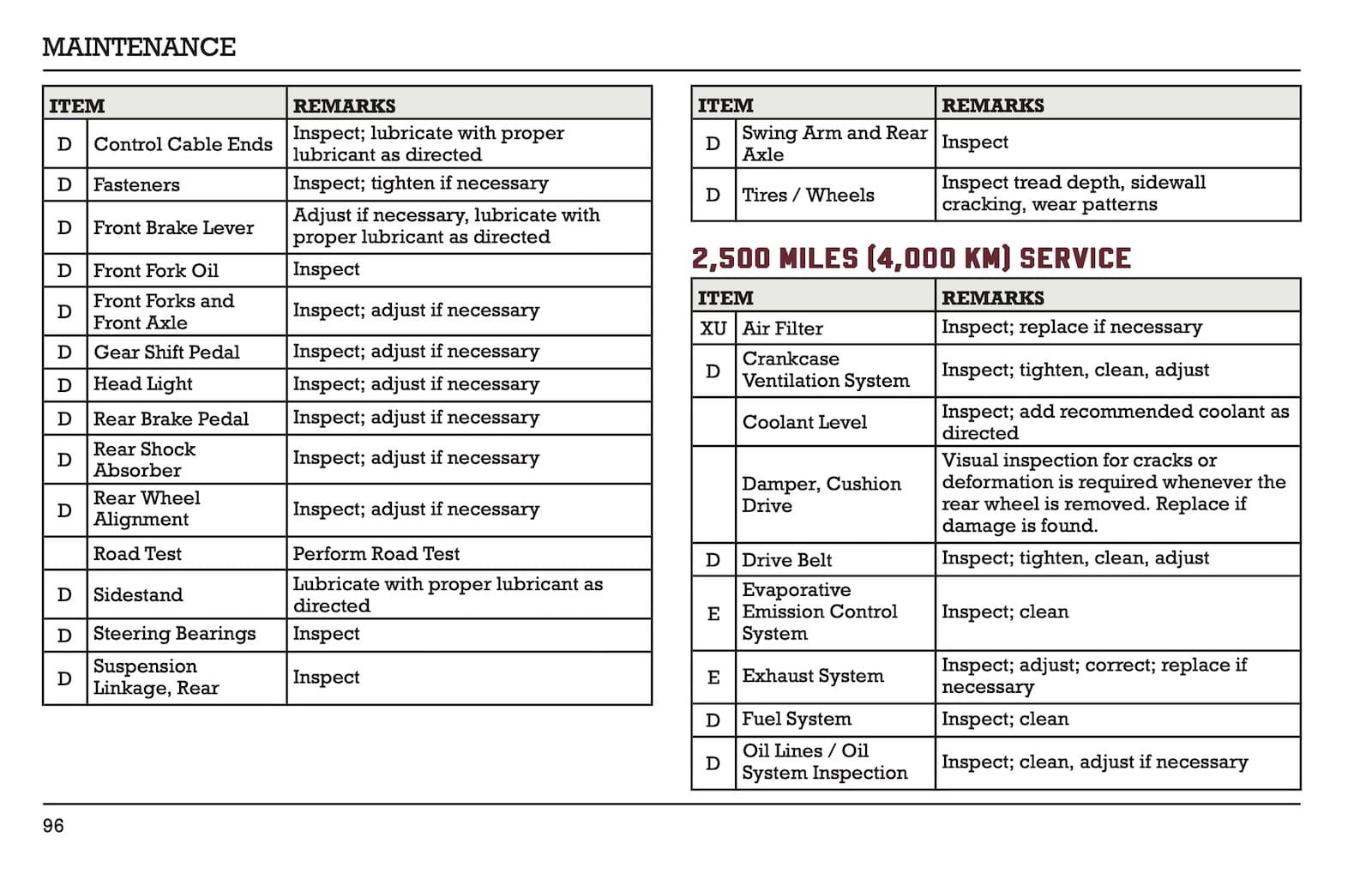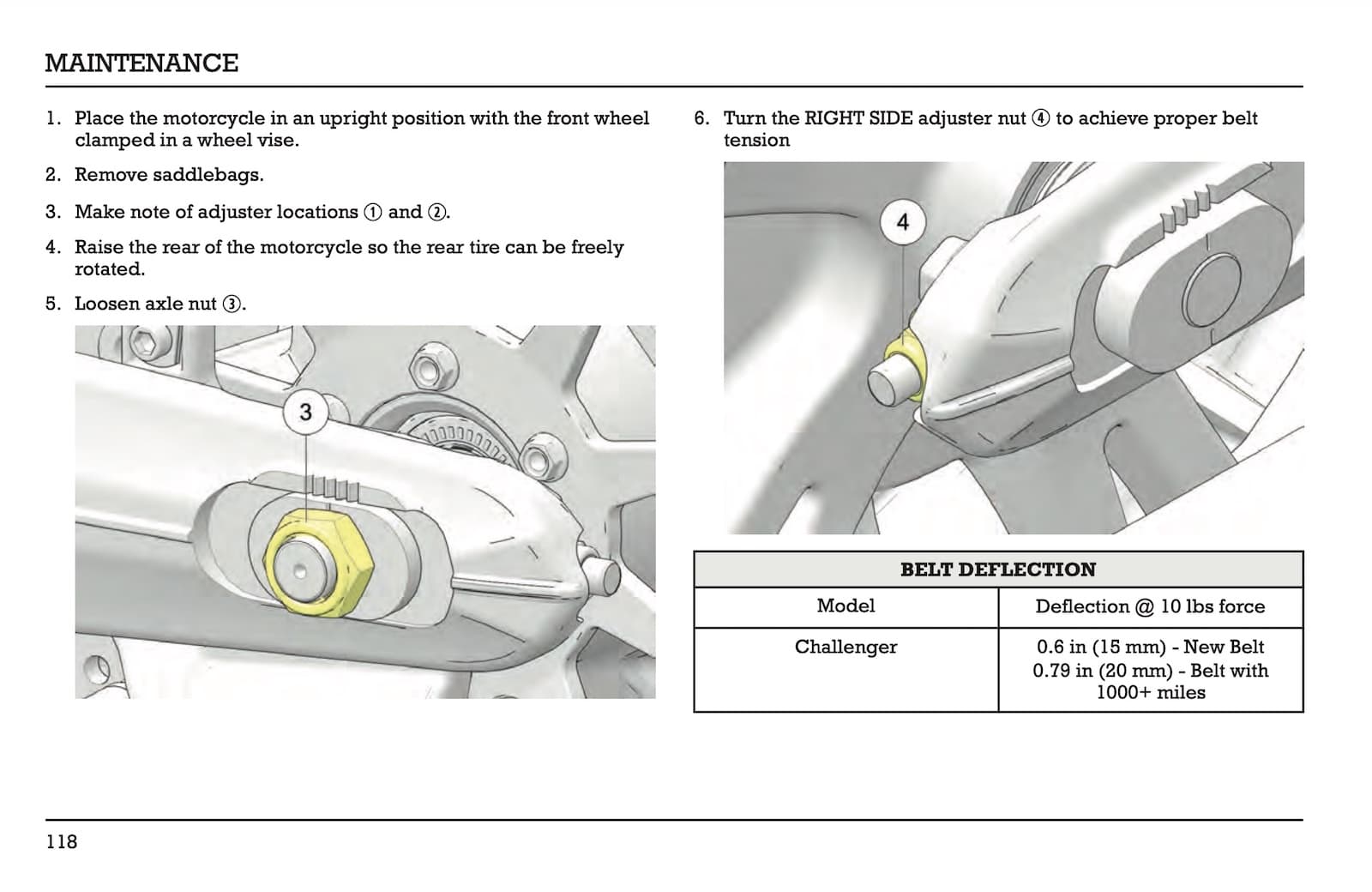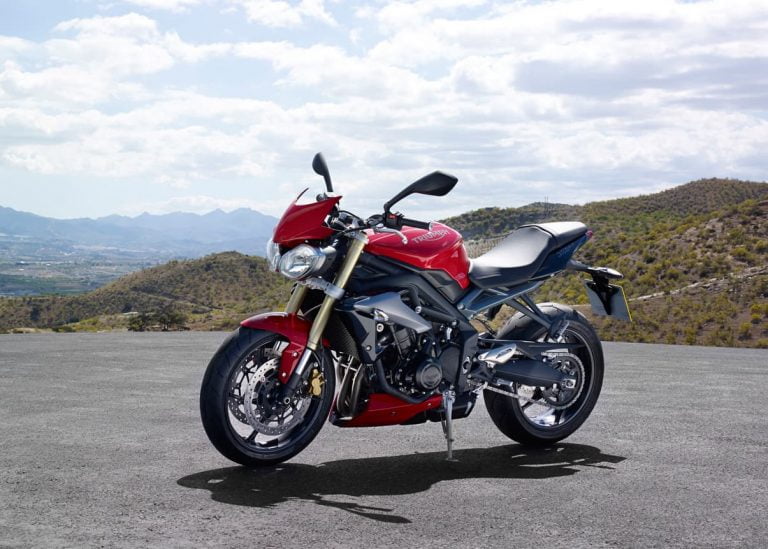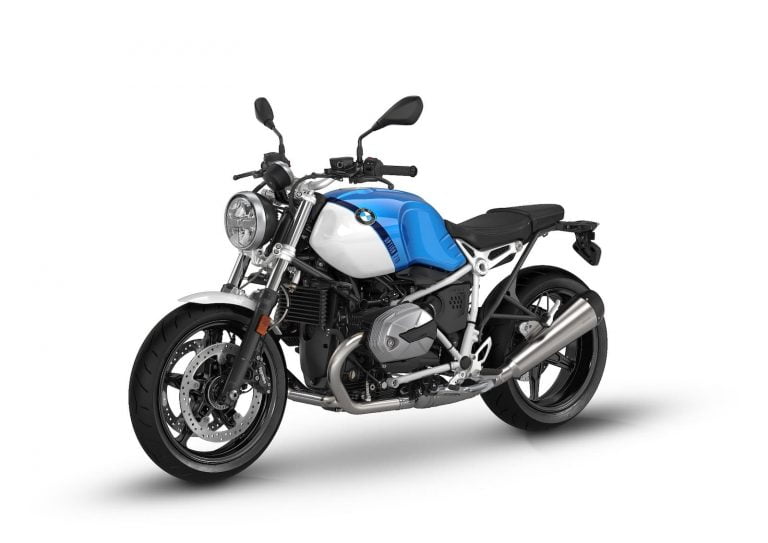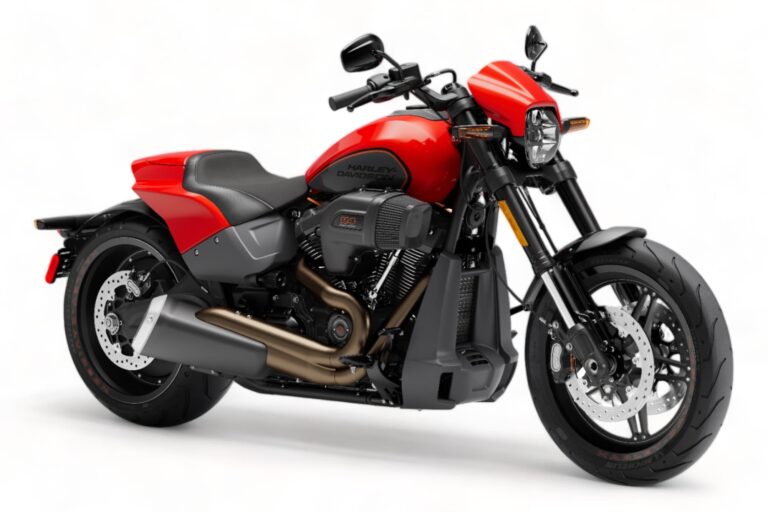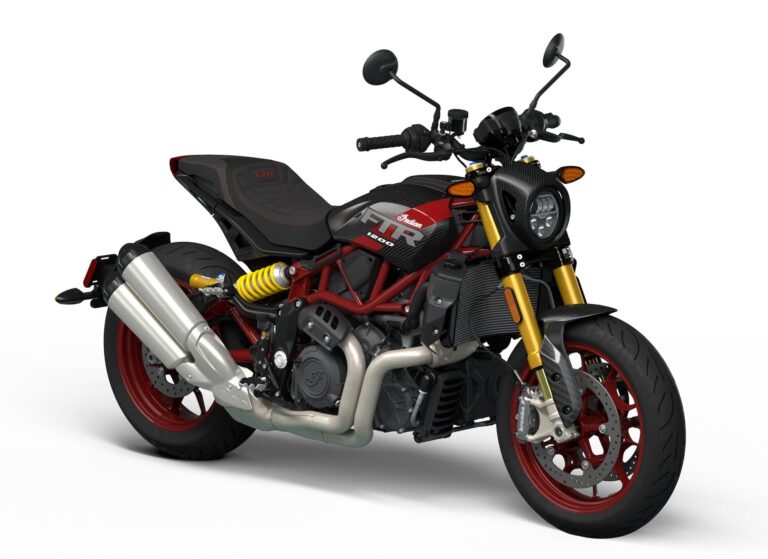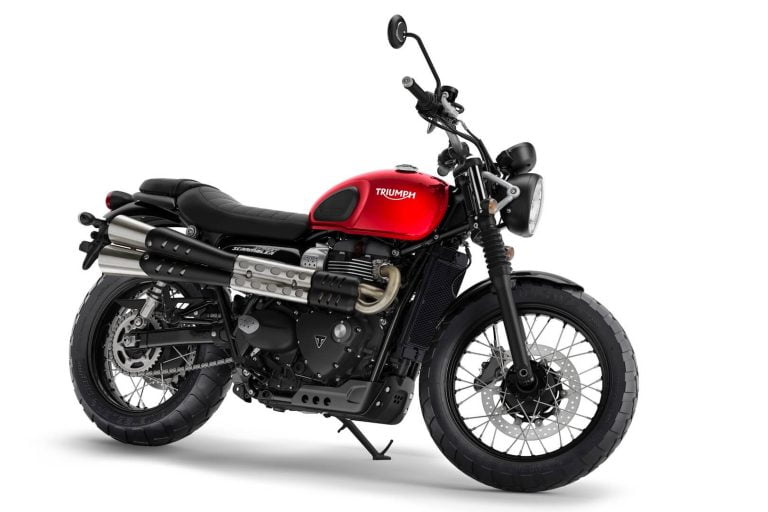Indian Challenger (2020+) Maintenance Schedule and Service Intervals
This is the maintenance schedule for the Indian Challenger and all variants, including the Indian Challenger Dark Horse and Indian Challenger Limited.
Indian has been making the Challenger range of motorcycles since 2020. They’re all powered by a liquid-cooled engine — the 1768 cc (108 c.i.) “PowerPlus” 60-degree V-twin. It has an 11.0:1 compression ratio and makes peak torque of a whopping 128 ft-lb (174 Nm) at a low 3800 rpm, with peak power of a quite high 122 bhp (91 kW), thanks to the liquid-cooled high-revving engine (it has a rev limiter at 6500 rpm).
Liquid cooling is quite rare in big cruisers, but is becoming more common in the latest generations of Harley-Davidson and other american motorcycles. Indian already had one liquid-cooled bike, the mid-size Indian Scout.
The Challenger’s PowerPlus engine has single overhead chain-driven cams, four valves per cylinder, and hydraulic valve lash adjustment, meaning it doesn’t need its valve clearances serviced — ever.
Final drive for the Indian Challenger is via a wet clutch, a 6-speed transmission, and a belt.
Updated in 2023 with details on belt tension checking and adjustment.
This site has links from which we earn a commission (which unfortunately nobody can save, not even us). If you appreciate this research work, then please use those links. Thanks.
Indian Challenger Service Intervals
Basic service intervals for the Indian Challenger are every 5000 miles (8000 km) at which point Indian recommends changing the oil and filter and doing a host of checks.
Indian recommends changing the air filter and checking the spark plugs and compression every two services. But they only recommend changing the spark plugs every 30,000 miles (48,000 km).
Being a liquid-cooled engine, you do need to change the coolant. Indian recommends you change the coolant every five years or 50000 miles / 80000 km, whichever comes earlier.
Indian also recommends frequently changing fork fluid — every two years. They even put a distance interval on replacing the rear shock!
See the maintenance schedule below for more details.
What You Need to Service an Indian Challenger
In addition to fluids and consumables like spark plugs and filters, the Indian Challenger needs a few special items for regular service. It’s partly because it’s a big bike, and partly because Indian specifies that in some situations, the bike should be upright and the rear wheel elevated.
This includes (links below are some high-quality but affordable ones):
- A front wheel chock — You need a method of keeping the front wheel locked while you elevate the rear.
- A rear paddock stand — You need to elevate the rear wheel to set the belt tension.
- A belt tension tool — You need one of these on belt-drive motorcycles to check the belt tension.
- Engine compression test tool — Indian recommends you regularly check engine compression.
Aside from that, you’ll need general fluids, like an Indian oil change kit, all detailed below with the schedule.
Maintenance Schedule for the Indian Challenger
Below is the maintenance schedule for the Indian Challenger motorcycles from the manual.
Since the manual shows the schedule as a series of to-do lists, we’re presenting it in simplified format so it’s easier to understand what’s due when.
Basically there are three kinds of service:
- Standard Service — an oil/filter change and multi-point inspection, done every 5000 miles / 8000 km
- Scheduled service — done less frequently, according to the schedule below.
- Very infrequent service — Done at 50000 miles / 80000 km, grouped below.
Indian Challenger — Standard Service
Below are the items to do in a standard service for the Indian Challenger.
Do these items according to the schedule below.
| Indian Challenger — Standard Service Checklist |
|---|
| Brake pads – inspect, replace if beyond service limit |
| Fuel system – inspect |
| Oil system/ lines – inspect |
| Control cable ends – inspect / lubricate |
| Clutch lever – inspect, adjust / lube as necessary |
| Clutch cable freeplay – inspect / adjust |
| Front brake lever – inspect, adjust / lube as necessary |
| Gear shift pedal – inspect, adjust / lube as necessary |
| Rear brake pedal – inspect, adjust / lube as necessary |
| Fasteners – check tightness |
| Front forks and front axle – inspect for smooth operation, no leaks, no notchiness. Clean to remove bugs / tar buildup. Make sure front wheel has no play |
| Damper, cushion drive – inspect for cracks or deformation whenever rear wheel is removed |
| Swing arm and rear axle – inspect (make sure no noises / notchiness when bouncing up and down on bike), and make sure wheel bearing has no play |
| Rear suspension linkage – inspect |
| Rear shock absorber – inspect for leaks / pitting / bugs or tar buildup, adjust if necessary |
| Rear wheel alignment – inspect, adjust if necessary |
| Tires / wheels – inspect tire condition and tread depth |
| Sidestand – inspect, adjust / lubricate as necessary |
| Battery – check terminals, clean, and test |
| Crankcase ventilation system – inspect, tighten, clean, adjust |
| Evap emission control system – inspect and clean |
| Road test – perform |
Indian Challenger — Scheduled Service
Below is the maintenance schedule for the Indian Challenger.
| mi x 1000 | 2.5 | 5 | 10 | 15 | 20 | 25 | 30 | |
|---|---|---|---|---|---|---|---|---|
| km x 1000 | 4 | 8 | 16 | 24 | 32 | 40 | 48 | Every |
| Perform full inspection checklist (see above) | ✓ | ✓ | ✓ | ✓ | ✓ | ✓ | ✓ | |
| Engine oil – Replace. Inspect used oil for contaminants Engine oil: 15W-60 Full Synthetic Drain plug torque: 20Nm / 15 lb-ft Get an (Indian Motorcycle Oil Change Kit) | ✓ | ✓ | ✓ | ✓ | ✓ | ✓ | ||
| Engine oil filter – Replace (HF175, included in kit above) | ✓ | ✓ | ✓ | ✓ | ✓ | ✓ | ||
| Air filter – Inspect and clean | ✓ | ✓ | ✓ | ✓ | ||||
| Air filter – Replace (PL-1720) | ✓ | ✓ | ✓ | |||||
| Engine compression – inspect | ✓ | ✓ | ✓ | |||||
| Spark plugs – inspect, torque correctly | ✓ | ✓ | ||||||
| Spark plugs – replace (LZMAR8AI-10) | ✓ | |||||||
| Exhaust system – inspect, tighten, adjust | ✓ | ✓ | ✓ | ✓ | ||||
| Drive belt – inspect, tighten, clean, adjust (see below) | ✓ | ✓ | ✓ | ✓ | ✓ | ✓ | ||
| Drive belt – replace | ✓ | |||||||
| Front fork oil – replace | ✓ | ✓ | ✓ | 2 years | ||||
| Steering bearings – inspect (no notchiness, no play in bearings) | ✓ | ✓ | ✓ | |||||
| Brake fluid – replace (Castrol DOT 4) | ✓ | ✓ | ✓ | 2 years | ||||
| Gear position switch – inspect, clean | ✓ | ✓ | ✓ | |||||
| Battery key fob – replace | ✓ |
Indian Challenger — Long-term Service
Below are the service items to do at the intervals below. Where there’s both, use the shorter of the stated distance or time intervals.
| Service item | Distance interval | Time interval |
|---|---|---|
| Coolant – replace Indian Coolant | 50000 mi (80000 km) | 5 years |
| Fuel system – replace (hoses, filters, etc.) | 50000 mi (80000 km) | – |
| Rear shock absorber – replace | 50000 mi (80000 km) | – |
Checking / Adjusting the Drive Belt on the Indian Challenger
At every service interval, check the belt condition. You want to make sure it has no cracked or broken teeth.
See the below examples from the Indian manual (showing only the situations where you should replace the belt).
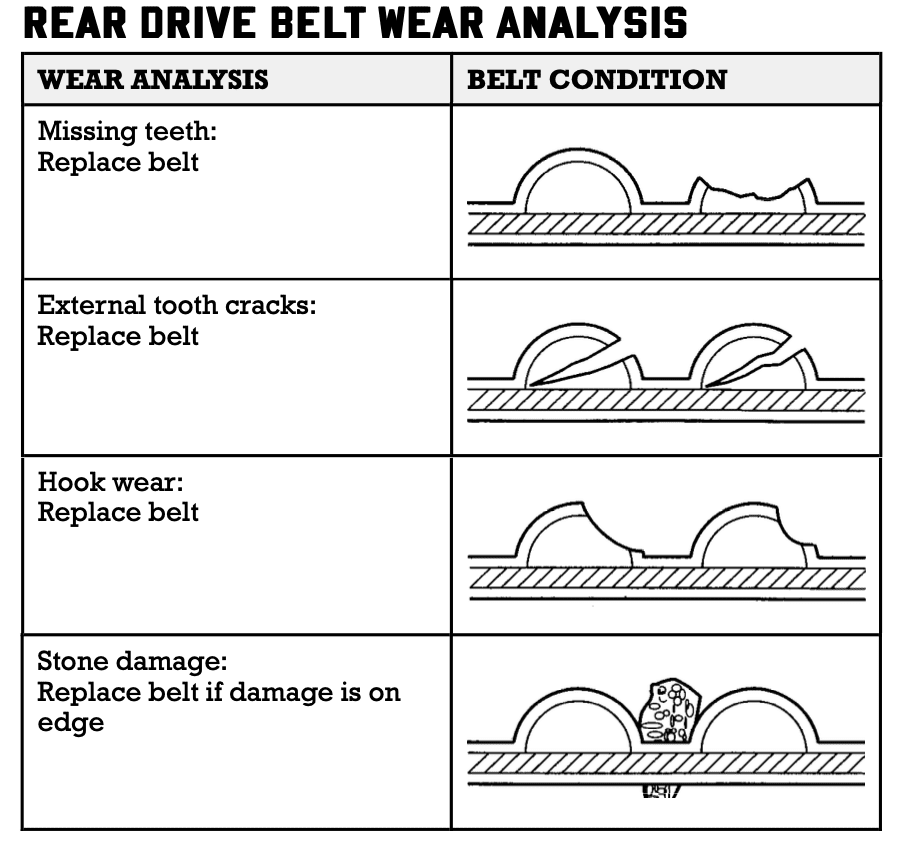
You also need to check the deflection level of the drive belt. To do so, use a belt tension tool.
Follow this procedure:
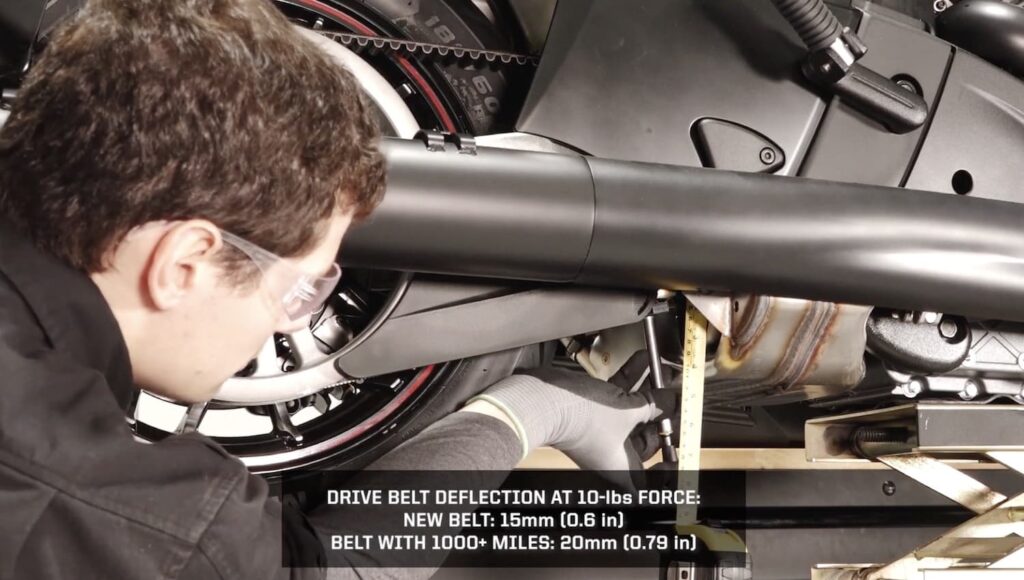
- Put the motorcycle upright with the front wheel clamped.
- Remove the side covers. Disconnect the saddlebag lock connector.
- Open the saddlebags, remove the saddlebag fasteners, and remove them.
- Ensure the motorcycle is in neutral.
- Elevate the rear wheel.
- Hang a tape measure off the motorcycle near the middle of the drive belt.
- Push up with the belt tension tool to measure the deflection against the tape measure.
- Make the check at a few points of the belt, rotating the wheel.
See this video by Indian on the complete procedure.
The belt, with 10 lb of force, should meet the following deflection specs:
- New belt: 0.6″ / 15 mm
- Belt with 1000+ miles: 0.79″ / 20mm
To adjust the drive belt deflection on the Indian Challenger, do the following:

- Put the motorcycle upright with the front wheel clamped.
- Remove the saddlebags.
- Raise the rear of the motorcycle so the rear tire can be rotated
- Loosen the axle nut
- Turn the right side adjuster to get the right belt tension (see specs above, depending on belt age)
- Use the left side adjuster to correct belt alignment, rotating the wheel backward until the belt comes off the inside sprocket flange. (The belt should track to the centre of the sprocket surface.)
- Rotate the wheel forward, making sure the belt is still centred (you can see the sprocket teeth on both sides of the belt). Note that you can use the alignment markers as a reference, but they’re approximate — the final indication of alignment is the belt’s position.
- Keep adjusting the adjusters as necessary to get alignment.
- Then, tighten the axle nut (torque spec 65 ft-lb / 88 Nm).
Maintenance Torque Specs for the Indian Challenger
Below are the maintenance / tightening torque specs for the Indian Challenger.
| Item | Nm | lb-ft |
|---|---|---|
| Engine oil drain plug | 20 | 15 |
| Sidestand bumper bracket fastener | 10 | 7 |
| Oil filter Tighten to contact + 3/4 to 1 turn | n/a | n/a |
| Airbox filter cover fasteners | 10 | 7 |
| Fuel tank fastener | 24 | 18 |
| Brake lever pivot pin | 6 | 4.4 |
| Brake fluid diaphragm screws | 1.4 | 1 |
| Spark plugs | 10 | 7.4 |
| Front wheel axle bolt | 70 | 52 |
| Front wheel pinch bolts | 26 | 19 |
| Rear axle bolt | 88 | 65 |
| Seat mount bracket screws | 24 | 18 |
| Saddlebag fasteners | 24 | 18 |
| Battery terminal | 5.4 | 4 |
| Battery bracket fastener | 10 | 7 |
| Chin fairing | 4 | 3 |
| Windshield screws | 4 | 3 |
About the Indian Challenger
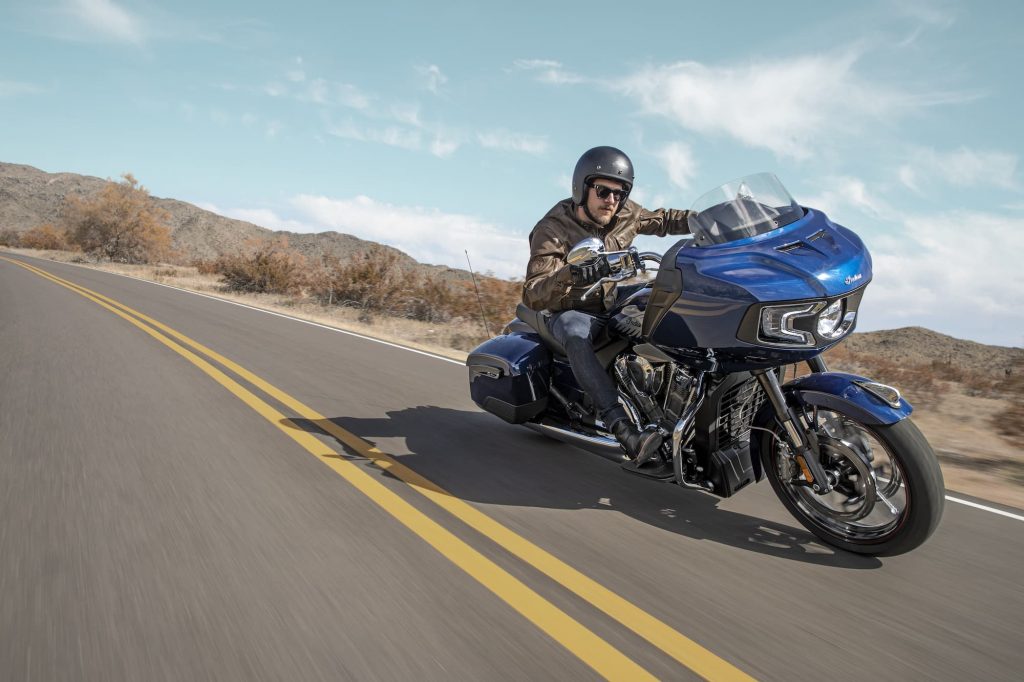
The Indian Challenger is Indian’s first big liquid-cooled cruiser.
Let’s start off by making something clear: Indian is, despite all the branding and call-backs to being a very old company, actually a very new company. Polaris acquired Indian in 2011, and the first motorcycles produced under the new Indian name have been just very different than anything that came beforehand.
Despite this, Indian constantly likes to remind us it’s a very old motorcycle brand. It is — but there have been massive (like multiple decades long) breaks in production. The only things consistent are some of the words and names being used. And a general brand aesthetic.
So Indian has to do things a little differently for us to be able to appreciate that they’re not just a carbon copy of Harley-Davidson (even though the original Indian was the first to market with many things Harley-Davidson is now known for… if only by a few years).
Like a few of Indian’s other recent developments, the Indian Challenger breaks the mould a bit for what an American cruiser should be. Indian needs to take these bold steps so it can cement its name in American cruiser market that’s dominated by the Harley-Davidson brand.
Indian has done some interesting stuff with its air-cooled twins (like the modern classic styling of the Indian Chief), but the Challenger is a step in a different direction. Even though it looks like a classic bagger and has tons of chrome on it (or tons of black black, if you went for the Dark Horse), the Challenger has an unusual engine and high-performance brakes and suspension.
Let’s start with the engine. The PowerPlus unit is a liquid-cooled 108 c.i. (1768 cc) 60-degree V-twin with a sporty 11.0:1 compression ratio.
The liquid cooling is already interesting enough. But then so is the interior design of the engine: the PowerPlus engine has a SOHC 4 valve per cylinder design. But despite this, Indian kept hydraulic self-adjusting valve actuators, meaning that the Challenger never needs a valve adjustment.
By the way, the PowerPlus engine name is a call-back to one of the first models under the Indian brand, the Indian Powerplus, built between 1916 and 1924. Apart from that being a V-twin, it was an entirely different motorcycle. Nonetheless, the name has some history.
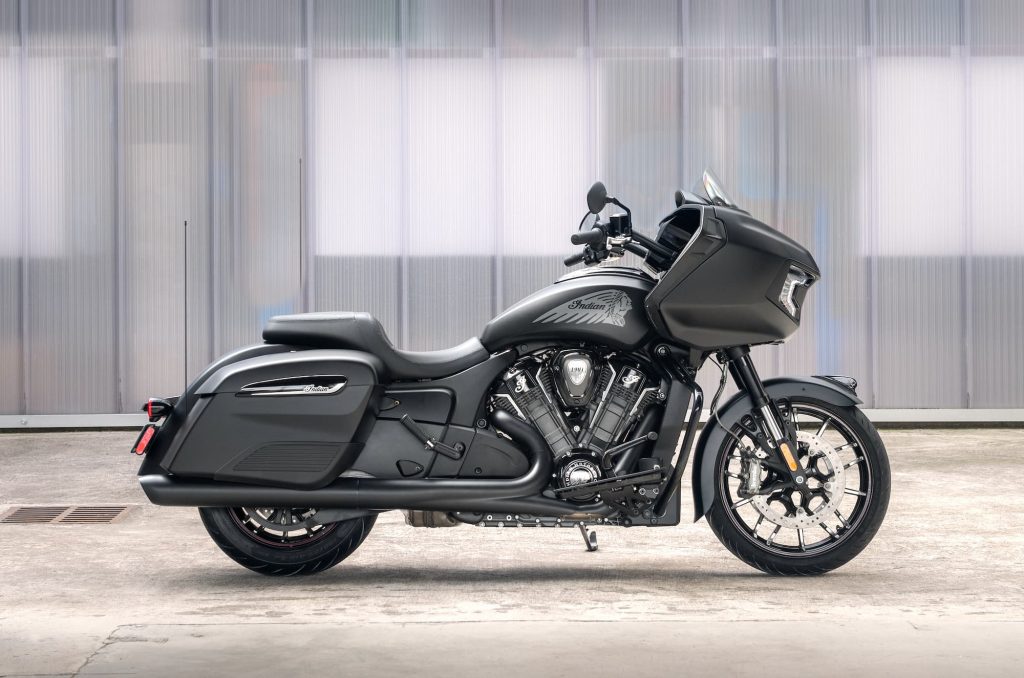
Aside from the engine, there are a few aspects of the Indian Challenger that are quite high spec.
The front suspension is an inverted (upside-down) fork. They’re non-adjustable, though. The rear Fox shock is adjustable for preload only.
And the brakes are via twin 3320mm discs and 4-piston Brembo monoblock calipers. This is sportbike level spec!
Finally, the Indian Challenger in its Limited and Dark Horse spec gets cornering ABS and traction control via its Bosch IMU and safety package. This is quite a rarity on a cruiser motorcycle!
The whole package makes the Indian Challenger quite a high-spec, high-power bagger, enough that it’s well known as being a dominant contender in the King of the Baggers race series.
The display tech of the Indian Challenger is also very new and interesting. Indian gave the Challenger its new and updated “Ride Command” infotainment system. Only the higher-spec models get the navigation portion, mind you.
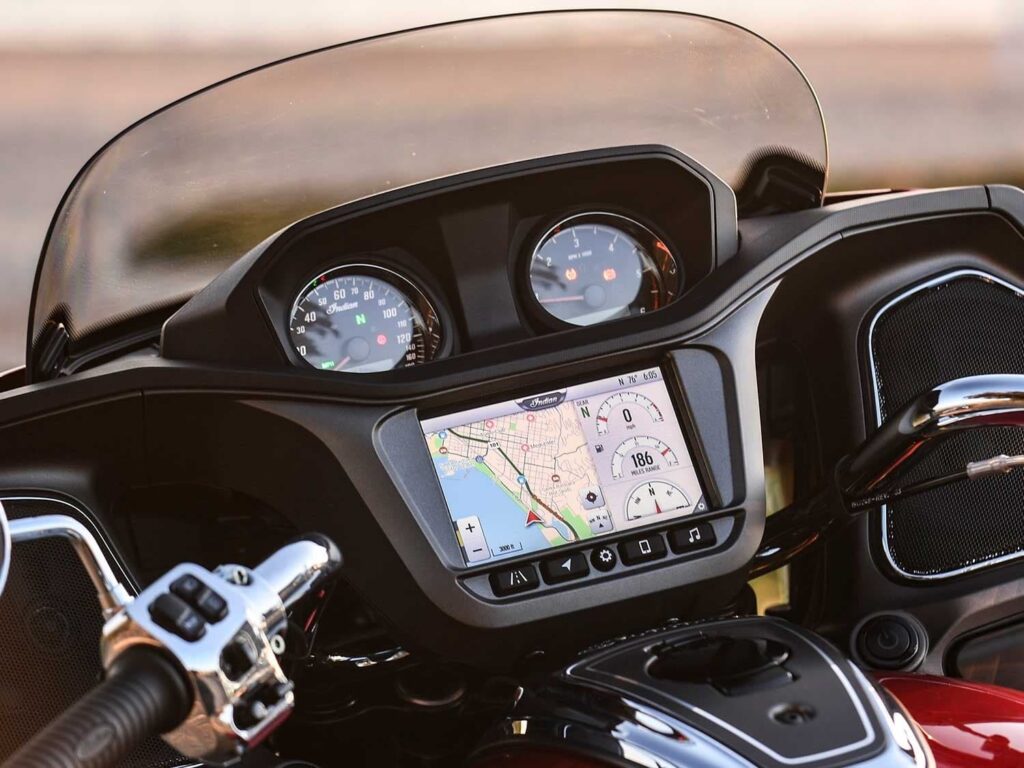
From 2022, Indian released a full-dress tourer based on the same PowerPlus engine, the Indian Pursuit.
Reference — Maintenance Schedule Screenshots from the Manual
See the below screenshots from the manual for the Indian Challenger as references for the above maintenance schedule.
You can download manuals for Indian motorcycles from their official website.
